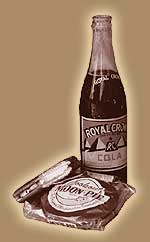



The box is built out of aspen plywood and measures 19" x 10" x 10". While there may be some wasted space, it ain't much! The top photo shows the front of the box. On the front is a lockable case latch so a small padlock can be applied to the case to keep little hands out when it's time to go to lunch or peruse the train show. The second photo shows the end where a large computer fan draws in air and pushes it across the transformers and the booster. On the backside (third photo), you can see the piano case hinge for the box lid, the exit hole for the cooling air, and the standard computer plug that connects to the power supply. Using the removable power cord makes it very easy to transport. The last picture shows the business end with the Digitrax UR91 radio throttle receiver and four Cinch-Jones plugs. The Cinch-Jones connectors are the Ntrak standard, so this box can quickly be connected to any Ntrak layout.


Opening the box, there's a programming track and a tray to hold all of the throttles, power cable, and connector cable. This tray is also a safeguard against curious little hands that might find their way into the box.

Removal of the tray reveals the guts of the system: The DCS100 booster, the UR91 radio throttle receiver, and the PM42 power manager (all on the right). The booster is attached with heavy-duty velcro just in case it needs to be removed. The UR91 allows Digitrax simplex radio throttles to be used. The PM42 is particularly necessary for Ntrak layouts since it allows individual circuit breaker detection. This way, a short on one track doesn't cause a system crash and everyone else can keep running trains while the short is found. On the left, there are a couple of fuses and a circuit breaker for the power supply. Just plugging in the power cord does not power up the transformers. The switch on the far left has to be thrown first. Even that does not power up the booster; that's the purpose of the other switch. All exposed wiring on the right side of the box is either 12V or 16V, so there's no real shock hazard. Even at this level, I didn't want there to be any chance of a child getting shocked. Hopefully, someone will have spotted the little tike by the time he/she gets this far!!

Removing the partition and lifting the cover that contains the power switches and the circuit breakers shows the transformers. The terminal blocks on the left carry 110V power, so it's a good idea to have the box unplugged before even opening this side. The fan is a 110V fan, so it runs directly off the input power. The large transformer powers the booster, while the two smaller transformers provide power to the UR91 and the PM42.
And that's it! All in all, it's about the best way I've seen to make a full DCC system truly portable. Putting the system in a box sure cuts down on the clutter associated with the Digitrax system, so this might be a good idea for any Digitrax user. I hope these ideas are of some use to you...





















